Baiyundong Tourist Area Kongshan
Baiyundong Tourist Area, Kongshan
Baiyundong in Kongshan Mountain is a national key scenic spot, National Geological Park and national AAAA level scenic spot. Located in Lincheng County of Xingtai City, it is the main scenic spot of Baiyundong Scenic Area in Kongshan Mountain. It is 56 kilometers from Xingtai City in the South and 86 kilometers from Shijiazhuang City in the north. Formed 500 million years ago in the Middle Cambrian, Baiyun Cave in Kongshan is a rare karst cave landscape in northern China. Baiyun Cave in Kongshan is the largest karst cave in the same latitude in the world. There are five cave courtyards, namely "human", "heaven", "earth mansion", "dragon palace" and "labyrinth". The temperature in the cave is constant for four seasons and the main landscape is more than 150 places, along Beijing-Guangzhou Railway, Beijing-Shenzhen Expressway and 107 countries. Avenue.
Development history
Baiyun Cave in Kongshan was discovered on July 18, 1988 by local peasants during quarrying. The origin of "Kongshan Mountain" is said to be the roar of the whole mountain body when a mountain wind strikes, so local people call it "empty mountain" and the cave is known as "underground lava museum" by experts. The people's government of Lincheng County attached great importance to this and immediately set up a leading group for the protection and development of Baiyun Cave in Kongshan Mountain, and took measures for the protection of the cave. After investigation and demonstration by experts and scholars from China University of Geosciences, No. 11 Geological and Mining Team and Geographic Research Institute of Hebei Academy of Sciences, the tourism development plan of Baiyun Cave in Kongshan Mountain was formulated. In 1989, Lincheng County invested in the development and construction of karst cave and its surrounding tourism facilities. On July 1, 1990, the Baiyun Cave in Kongshan was officially opened to the outside world, and was listed as a provincial scenic spot by the People's Government of Hebei Province in the same year. In May 2002, it was awarded the fourth batch of national key scenic spots. Known as the "Baiyun Cave of Kongshan Mountain" in the first hole in the north, it has been awarded the title of national AAAA tourist attraction, National Forest Park and national geological park by May 2015.
Great changes have taken place in the opening up of Baiyun Cave in Kongshan for more than ten years. The government of Lincheng County relies on Baiyun Cave in Kongshan Mountain and takes Baiyun Cave in Kongshan Mountain as its leader. It integrates cave, mountain, water, primary secondary forest and human landscape, and the tourism belt with a radius of 250 square kilometers has taken shape. The original secondary forests of Baiyun Cave, Tiantai Mountain, Qishan Lake and Scorpion Valley in Kongshan were approved as "National Geological Park" by the Ministry of Land in 2005. Tiantai Mountain covers a total area of 23 square kilometers, exploring and wondering, one scene at a time; Qishan Lake Scenic Area is dominated by leisure and vacation, water recreation, catering and accommodation, conference services, etc.; "Summer Resort" Xiaotianchi Primitive Secondary Forest; "Puli Temple Pagoda of the Song Dynasty" and "Xingyao Site of the Tang Dynasty", "Xiboting" (Legendary Lincheng County Previously Sihe Old Fat). Since the flood, the cultural landscape of Xiboting-Laizhenshui, which was ordered by the county decree in Wanli, as well as the geological museum, Xing Porcelain Workshop, Qishan Lake Ring Lake Highway Development, and the construction of tourist highway, has basically formed a cultural pattern of tourism with a circle of less than 5 kilometers, which will create a pleasant "wonderful tourism".
Development details:
On July 18, 1988, Shannantou Village, located at the foot of Baiyun Mountain in the eastern foot of Taihang Mountains, woke up early in the morning with the usual barking of chickens and dogs. Villagers Chen Yongqing, Guipatriotism, Gui Aijun, Chen Zhien and Zhang Zhanjun came to the old site of the cement plant to dig rocks in Kongshan. With the sound of "ding" and "ding" steel brazing, an unfathomable hole suddenly appeared, and their steel brazing leaked into the "belly" of the mountain. So, five peasants who had not been surprised and excited in the countryside were shocked: the mountain was empty, but they met the cave treasure house. They quietly brought flashlights, candles, ropes, chalk (for route marking, in case they lost their way) and other things from their homes. They went into the "abdomen" of the mountain with mysterious, frightened and hopeful complex feelings, and burrowed into the ancient, sealed deep cave. The acupoint has been explored for more than ten hours. Quickly, "Lincheng out of the big cave!" The news spread all over the county like wings, and aroused the leaders of the counties, cities and provinces concerned. "Northern Miracle" Baiyun Cave in Kongshan Mountain was born with "broken stomach".
Then Hong Kong's Dagong Daily, Business Daily, People's Daily, Huasheng Daily, China Tourism Daily, Hebei Daily and other major news media reported on the cave, which has a long-standing reputation.
In 1989, the experts concerned were invited to carry out investigation, planning and demonstration. They believed that it was rare in karst caves in the whole country and even in the world, and had great value for sightseeing and scientific research. After scientific development and construction, the cave was officially opened to the outside world on July 1, 1990. Mr. Zhao Puchu, President of the Chinese Buddhist Association, inscribed the cave name "Baiyun Cave in Kongshan Mountain". Liu Yi, former Director-General of the State Tourism Administration, Liu Fuzhi, former Procurator-General of the Supreme People's Procuratorate, Ma Wenrui, Vice-Chairman of the CPPCC National Committee, Yang Rudai and other leaders, world-renowned cave expert (Canada) D. Ford (Yugoslavia), Milanovic and relevant ministries, provincial and municipal leaders of the State Council, as well as celebrities from all walks of life, have made endless speeches of praise, opening only half a year, i.e. receiving 400,000 tourists. Personnel. On October 1, 2007, the Lincheng National Geopark Museum, which invested more than 20 million yuan and was built on the south side of the cave, was open to visitors free of charge.
Main attractions
The Baiyun Cave in Kongshan is a large karst karst cave newly discovered in the north of China. It is called the Baiyun Cave in Kongshan Mountain because it develops on the Kongshan Mountain at the southern end of the Baiyun Mountain. According to experts, 500 million years ago, this area was a warm shallow sea environment. Limestone strata were deposited on the seabed. Later, crustal movement turned the ocean into hills. Because of the dissolution of limestone by groundwater, this rare karst cave in northern China was created. Five caves have been initially identified and opened to visitors, covering a total area of more than 4,000 square meters, with a total length of four miles. There are more than 150 main landscapes and six very rare scenic spots. The cave has a constant temperature of 17 degrees centigrade all the year round. According to the landscape features of the cave hall, experts named the five cave halls as "earth", "heaven", "labyrinth", "earth mansion" and "dragon palace".
Human cave Hall
The cave hall on earth is 70 meters long, 35 meters wide and 18 meters high. The main landscapes are net curly stone, bully whip, Optimus Prime, hanging temple, golden cicada opera goldfish and so on. Stone stalagmites, pagodas, stalactites and pillars are all over the cave. The largest pillar is 8.5 meters high and its chest is 4.3 meters. It is called Optimus Prime. Stone flowers are everywhere due to the multiple splashes and calcified deposition of water droplets falling from the top of the cave. "Net curly stone" is one of the most unique caves in Baiyun Cave of Kongshan Mountain, which is extremely rare in other caves in China.
Heaven cave Hall
Paradise Cave is 120 meters long, 65 meters wide and 20 meters high. It is the largest cave in the cave. The curtain hangs in the hall, magnificent and magnificent, like heaven. The main landscapes are "Yin Er Yang Error" of relative displacement of stalactites and stalagmites due to crustal changes; curly stones with lateral growth and branch-like shape "exogenous branches"; exquisite and so-called "Jade Hammer versus Galactic Bottle" of Baiyun Cave in Kongshan Mountain; powdery calcified layer on the surface of "Milky Way descending" landscapes, geologically known as "Moon Milky Stone", to geology and ancient gas. Hou's research has high scientific value. In addition, there are Wannian Ganoderma lucidum, Millennium immortal mushroom, Shiqin, Yulong dianchi, Yaochi and other landscapes.
Dragon Palace cave Hall
Dragon Palace cave hall, the cave Qiongzhi Zhu, water pool densely covered, very like the Dragon Palace. The tour is 1 mile long, with a drop of about 50 meters and more than 50 named landscapes. There are Lotus Tower, Drunken Ape Pagoda, Jade Dragon Sleeping, Two Towers Competing for Male, Linear Stone Tube, Two Turtles Kissing Dragon Senge and so on. "Linear stone pipe" is straight and even up and down, and hollow in the middle, which is called a unique cave. "Xianshan Jade Pavilion" is the essence of Baiyun Cave in Shikong Mountain. The landscape here is dense, step by step several sceneries, step by step change scenery, stone flowers, stalagmites, stalactites, stone waterfalls, stone curtains, color mantle and so on, its abundance and variation are the most representative. Among them, needle stone flowers are unique in other caves, and also unique in caves.
Cave house
Difu cave hall, the grotesque rocks in the cave, dark and terrible, quite similar to Difu. The main landscapes are Monster with One Eye, Judge, Senrota, Niutou and so on. These strange rocks are formed by the scouring and dissolution of flowing water.
Labyrinth Hall
Labyrinth cave hall, tunnel twists and turns, just like a phantom. The main landscapes are Eagle Wing Spreading, Fuluguan, Pearl Palace and so on.
Features of scenic spots
Baiyun Cave in Kongshan is located in Lincheng County, Xingtai City. It is located in the eastern foot of Taihang Mountain and southwest of Hebei Province. Its terrain is high in the West and low in the east. Baiyun Cave in Kongshan Mountain is a national key scenic spot, National Geological Park and national AAAA level scenic spot. Five caverns have been initially explored and developed and opened, with a total length of 4000 meters, a maximum cavern of about 2170 square meters, and more than 200 main attractions. In the five caves which have been proved to be open, the caves are connected with each other, and the halls are connected. According to the different atmosphere and scenes, the five caves are named "human world", "heaven", "earth mansion", "dragon palace" and "labyrinth" in turn. The first cave hall is spacious and magnificent, with mountains and rivers, and a peaceful view of the world; the second cave hall is draped with the curtain of heaven, which is magnificent and like heaven; and the third cave hall is full of strange stones, gloomy and terrible, which seems to be an imaginary place. The fourth cave hall "Dragon Palace" is densely covered with branches and beads, much like the Dragon Palace. Karst in cave
Complete shape, dense landscape per unit area, magnificent and colorful landscape form, the original background is well preserved. The fifth cave hall "labyrinth" is craggy, tortuous and has a unique cave sky. The five caves have different landscapes and characteristics. The whole enclosed space is full of colorful stone stalactites, stalagmites, stone mantles, stone curtains, stone waterfalls, stone curtain flowers and other carbonate shapes. Among them, reticulated curls of "exogenous branches", "linear stone tubes", "colored stone curtains" of cattle lung, stone curtains, crystal-like grapes, stone pearls, etc., are extremely rare in other caves in China. There are as many as 109 pseudo-figures in the cave. The size of the landscape varies from pillar to curtain, waterfall to platform. The largest stone pillar is 4.3 meters in circumference. It stands tall and magnificent. The largest stone curtain is 8 meters wide, while the smallest landscape stone needle is only a few millimeters in diameter. There are also unique shapes, vivid images, vivid parrot stones, lions and so on. The whole karst cave landscape gives people many kinds of artistic enjoyment, such as beauty of form, lines and space. It can be called "museum" and "underground labyrinth" of karst modeling.
Tourism information
Get accommodation
The Karst Cave Scenic Area has formed a complete set of facilities, convenient accommodation and food. The conditions of Shangshui Fish Village, Yuntai Villa, Yunhu Holiday Hotel, Qishan Lake Yinyuan, Holiday Cottage and Qishan Lake Holiday Villas are good. There are also Baiyun Hotel and Lincheng Hotel in the county.
Delicious food
Thin skinned walnut
Lincheng County has built the largest production base of high-quality thin walnut in northern China. It was rated as "the leading County of China's high-quality thin-skinned walnut industry". The demonstration base of high-quality thin-skinned walnut industry was recognized as the national demonstration base of thin-skinned walnut in Taihang Mountain spark industry belt. In 2009, Lincheng County was named "the hometown of Chinese walnuts". In 2007, at China International Forestry Expo, "Green Ridge" brand thin walnut won the title of "Olympic Recommended Fruit" and gold medal, and was recognized as "Green Food - Products" by China Green Food Development Center.
Lincheng Crispy Fish
Lincheng's most famous specialty dish is "Lincheng Crispy Fish". With wild carp, grass carp and silver carp in Qishan Lake as raw materials, the soup is stewed slowly, the meat is fine, the fish bone is crisp and the taste is unique, which can be called Lincheng unique. Carassius auratus can also cook soup, the soup color is milky white, the entrance has milk fragrance, has a high nutritional value. "Black fish stewed eggplant" is also a delicious dish in Lincheng. Wild black fish are distributed in the reeds of Qishan Lake and downstream rivers. It is especially delicious to stew with eggplant.
traffic
Baiyundong in Kongshan is 50 kilometers south of Xingtai City, 80 kilometers north of Shijiazhuang City, 350 kilometers north of Beijing, 390 kilometers east of Tianjin City, 320 kilometers west of Taiyuan City and 107 National Highway east of Beijing-Shenzhen Highway.
Driving routes: along the Beijing-Shenzhen Expressway, you can get off at the junction of "Baixiang Lincheng" or "Longyao Lincheng" Expressway and cross 107 National Highway to the west of 16km. Along National Highway 107, through "Zhennei" or "Fengcun" across the tunnel bridge to the west of 16 kilometers.
Passenger routes:
Get off at Lincheng Bus Station and go about 500 meters north. You can take bus No. 6 to the scenic spot from Beihuan. The fare is 2 yuan. You can also take a taxi to the scenic spot.
Xingtai Railway Station gets off and goes to Dahuoquan Park to take the bus from Xingtai to Qishanhu Tourist Special Line. Baiyundong Station in Kongshan gets off at 6 yuan. The journey is about 90 minutes.
Get off at Lincheng Railway Station and take a bus to the scenic spot.
Honors
Hebei Provincial Scenic Spots
Top Ten Tourist Scenic Spots in Hebei Province
Demonstration Sites of Civilized Scenic Spots in Hebei Province
National Key Scenic Spots (2002)
National AAAA Tourist Scenic Spots (2004)
National Geopark (2007)
Ten Strange Caves in China
Best 30 Sceneries in Hebei
Top Ten Gold Cards of Xingtai City
Surrounding attractions
In September 2005, the fourth batch of National Geopark Assessment was completed in Beijing. Lincheng National Geopark in Xingtai ranked 15th out of 53 units in China with 98.44 points. It was named National Geopark along with Taishan in Shandong, Dali in Yunnan and Shennongjia in Hubei.
Lincheng Geopark is located at the eastern foot of Taihang Mountain, southwest of Hebei Province, west of Taihang, east of the plain. By 2015, the park has established Baiyun Cave, Qishan Lake, Xiaotianchi and other scenic spots. The Park integrates mountains, waters, caves, forests and cultural relics. It has complete landforms of deep mountains, hills and plains, with green mountains and flowing springs. UNESCO Geopark Consultant Experts and Experts of the Assessment Committee highly praised Tiantai Mountain as the "Field Sedimentary Rock Museum" and Xiaotianchi as the "Field Laboratory".
Tiantai Mountain
Tiantai Mountain is 8 kilometers northwest of Baiyun Cave in Kongshan Mountain, Lincheng County, Xingtai City. It is one of the eight ancient sceneries in Lincheng City. It consists of large platforms, five grain barns, Shizhu Peak, Tianyan Mountain, Jiujianshan and other peaks. Its total area is about 23 square kilometers, and its main peak is 599 meters above sea level. Looking from afar, Tiantai Mountain is like a giant sleeping Buddha, whose head is East and foot is west. In ancient times, Tiantai Mountain had the saying of "Eight Sceneries of Tiantai Mountain". The main attractions are: valleys, waterfalls, clear springs, five grain barns, Longshou Gorge, Tianhuan, Jiuxian ridge, Datianyan Mountain, Xiaotianyan Mountain, Yunhai Pavilion, Half-wall Hall and South Chan, North Chan, Ciyunling, Xianyan Temple, Taoyuan Cave and so on. The rocks of Tiantai Mountain are Danxia landforms composed of red quartz sandstone. The rock peaks and cliffs are characterized by flat, steep, sloping and lush trees. It is named for its tall and elegant mountain body, small and exquisite terrace, peculiar and changeable scenery and rich and colorful scenery. Skyscraper cliffs, straight as cutting, unique shape, like eaves and domes, it records the most ancient rock ups and downs, falls, weathering, denudation process. Half way up the cliff, there is a "trestle road" more than 100 meters long, rugged and narrow, which is extremely difficult for ordinary people to pass.
Tiantai Mountain, with its beautiful and clear color, is like a brilliant pearl inlaid in the towering Taihang Mountains.
Qishan Lake Scenic Area
Qishan Lake Scenic Area (Lincheng Reservoir), located 2.5 kilometers southwest of Baiyundong in Kongshan Mountain, was built in 1958. It is an artificial reservoir for agricultural irrigation in the county with a storage capacity of 176 million cubic meters. The lake water is clear and pollution-free, and the water quality reaches the second level of the national standard. The lake has the characteristics of open water surface and long shoreline. The development of vacation, swimming, fishing, water-play and recreation projects has unique natural conditions. The planned development area of the scenic spot is 30 square kilometers, of which the surface area is 8 square kilometers. Here the lake water is clear, quiet and clear, the shallow lakeside is pale green, deep in the lake is luxuriant, and the distant mountains reflect each other, constituting a picture of green water and green mountains. At the northwest end of the lake, water floods the pond forest, trees grow in the water, water flows in the forest, boats are in the middle of the tree, and the artistic conception is beautiful and unique. The lake is rich in aquatic resources. It has dozens of shallow-water fishes, including green fish weighing more than 100 kg, round fish like a pot cover, and shrimps several inches long. In the golden autumn season, wild ducks often settle and fly, which has a special wild interest. In the low hilly garden area along the lakeside, there are many green grasses, and the beach on the shore is soft and white. Looking west, the mountains are like dai. Like a crystal clear blue gemstone, quietly inlaid at the feet of the towering Taihang. Here the four seasons are like spring, peaceful, quiet, floating peaks and shadows in the water, yachts flying waves, a school of "fairyland on earth".
Xiaotianchi Scenic Area
Located in the mirror of Shuangshipu Township in the middle section of Taihang Mountain in the west of Lincheng County, it is 50 kilometers away from the county town and 44 kilometers away from Baiyun Cave in Kongshan Mountain. The scenic spot has two thousand-year-old ponds in the pine forest of the East Daliang at an altitude of more than 1000 meters, just like "Tianchi", so it is called "Xiaotianchi". On the basis of specific geology, some peculiar peaks have been formed under the action of external forces mainly consisting of flowing water and collapse. For example, due to the hard red quartz sandstone covering at the top of the mountain body in the western part of the scenic area, the weathering and collapse along jointed faults formed a "mountain rock landform" landscape characterized by flat, steep cliffs and gentle feet, commonly known as "dike". These embankments form various peculiar shapes, such as the Golden Embankment on the top of a distant mountain like a magnificent golden palace squatting. There are many strange stone landscapes in the area, which can be roughly divided into three types. One type is red quartz sand residues on the top of the mountain, the occurrence of the strata is close to the level, and the bedding is clear, high rise on the top of the peak, its shape is like "Thousand Layer Cake", and also like a stack of neat codes, red like gold, so it is named "tortoise pack book". The second type is some hard rocks, such as lower Proterozoic sandstone and slate, which occur in upright strata and still stand on ridges after weathering, such as "Lao Niang Shi" and "Fengshi". The third kind of weird rocks is due to the collapse of the cliffs on both sides of the valley and the accumulation of weird rocks on the seabed or bank. For example, two huge rocks like sleeping Kang lie across the left bank of the Huaihe River, hence the name of Shuangshipu Village.
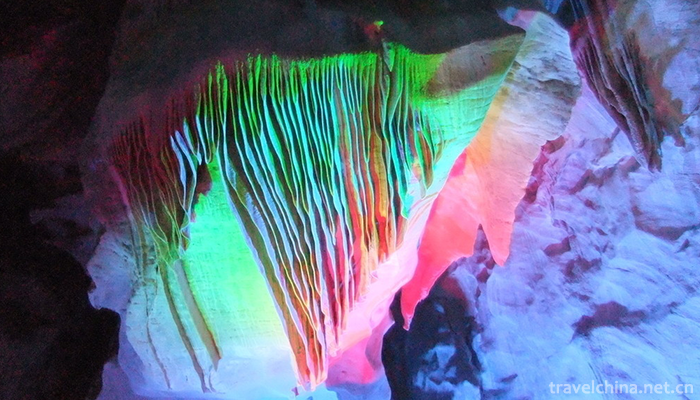
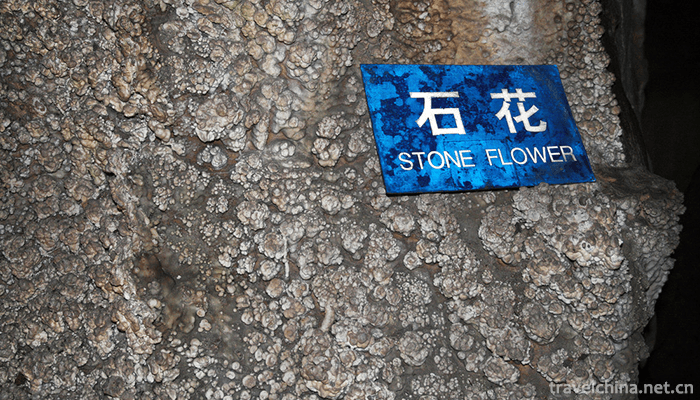
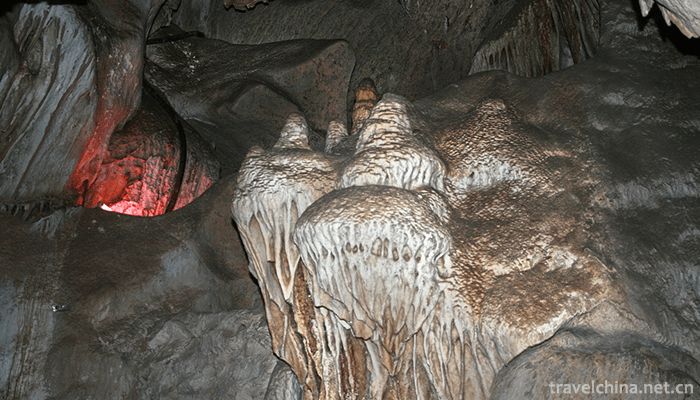

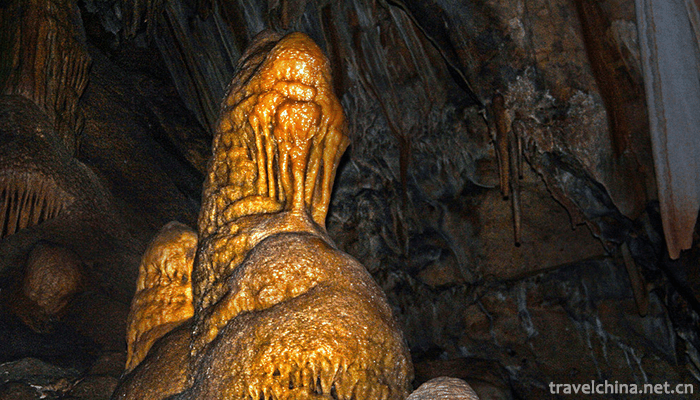
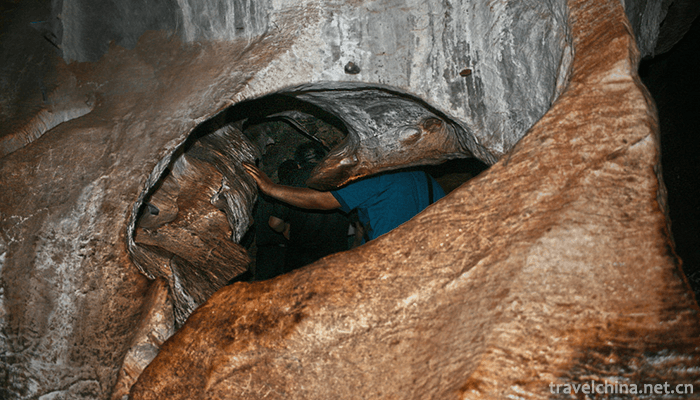

-
1.Go BelieveGoubuli baozi
Goubuli steamed bun is a snack made of flour, pork and other materials. It was founded in 1858 (Xianfeng period of the Qing Dynasty).
Time 2018-11-14 -
2.Gutian tourist area
It is understood that in 2008, Gutian Tourist Area was rated as a national 4A-level tourist attraction. In 2013, in order to further promote the development of tourism industry and upgrade the brand
Time 2018-12-08 -
3.Huhu Water Eco Scenic Spot
Located in the southwestern edge of Pingshan County, Hebei Province, the old revolutionary area, the Biaoshui Eco-Scenic Spot has a tourist area of 11.5 square kilometers, an altitude of 800-1100 mete
Time 2019-01-12 -
4.Huanshui Bay Hot Spring Resort
Huanshui Bay Hot Spring Tourist Area of Anyang City is located at the exit of Anlin Expressway in Anyang Hi-tech Development Zone, Henan Province, close to National Highway 107 and the west side of Be
Time 2019-01-17 -
5.Dongguan Longfeng Villa Film and Television Resort
Longfeng Villa Film and Television Resort officially opened on April 18, 2005. Since its opening, it has developed from a single tourist attraction into a large-scale theme wedding dress shooting base
Time 2019-02-03 -
6.Production Techniques of Tibetan Mineral Plant Pigments
Since the emergence of human beings, mineral pigments have been accompanied by human beings. Mineral pigments were first used to draw murals
Time 2019-04-09 -
7.Match show
Sai opera is an ancient opera which has been spread in Shanxi, Hebei, Inner Mongolia and Shaanxi. It is a traditional literary form with strong local characteristics of frontier fortress. Sai opera wa
Time 2019-06-12 -
8.Tujia Wedding Song
The Tujia people living in the border areas of Hunan, Hubei, Chongqing and Guizhou are an ancient civilized nation with a long history and traditional customs, and retain strong national characteristi
Time 2019-06-23 -
9.Wangcong Temple
Wangcong temple, located in the southwest of Pidu District, Chengdu City, Sichuan Province, is 23 kilometers away from Chengdu City. It was built in memory of Du Yu, the earliest king of Shu, and his successor Cong di.
Time 2020-11-05 -
10.Panzhihua in the Sui Dynasty to Yuan Dynasty
At the beginning of Sui Dynasty, Yanzhou was still set up, which was renamed Xining Prefecture and Guazhou Prefecture, and became Yueyi county again. The five counties of Yanzhou established by the Northern Zhou Dynasty were abolished, and the other five counties were subordinate
Time 2020-12-14 -
11.Meishan local culture
Meishan culture mainly includes Dongpo culture, longevity culture, Taoism culture, Buddhist culture, bamboo culture, water culture and so on. The past Meishan Dongpo Cultural Festival, Pengzu Shouxing Festival, Qingshen bamboo weaving art festival, Danling suona Festival, etc.
Time 2020-12-18 -
12.Yibin economy
In 2019, Yibin City will realize a GDP of 260.189 billion yuan, an increase of 8.8% over the previous year in terms of comparable prices. Among them, the added value of the primary industry was 27.764 billion yuan, an increase of 2.9%; the add
Time 2020-12-18